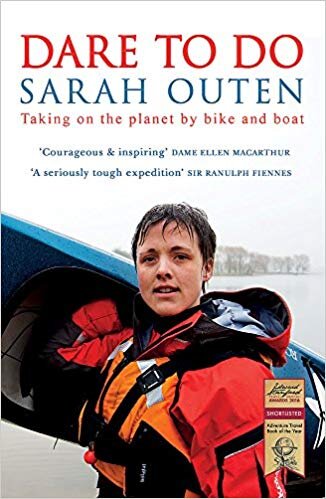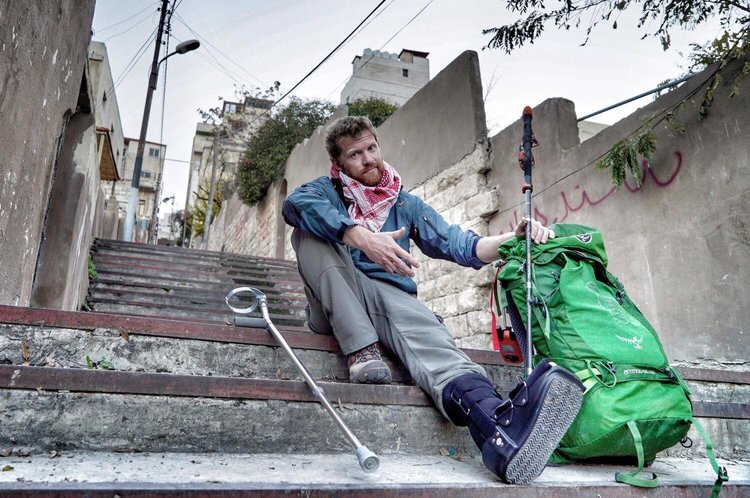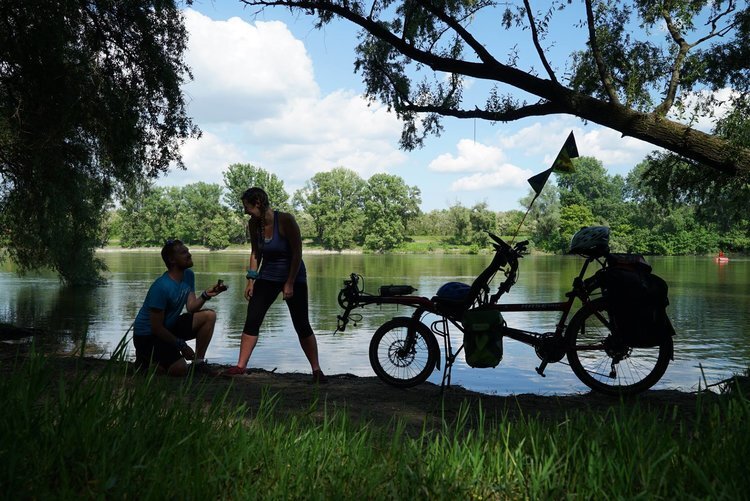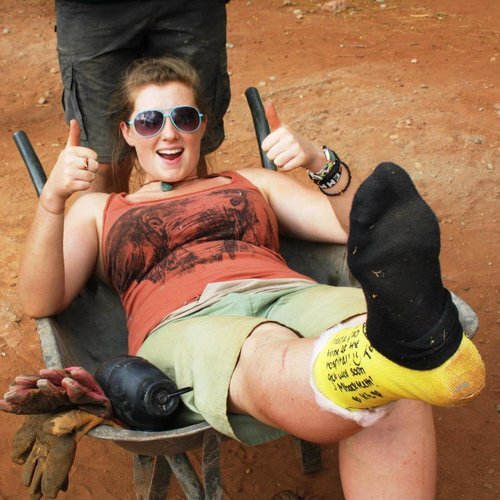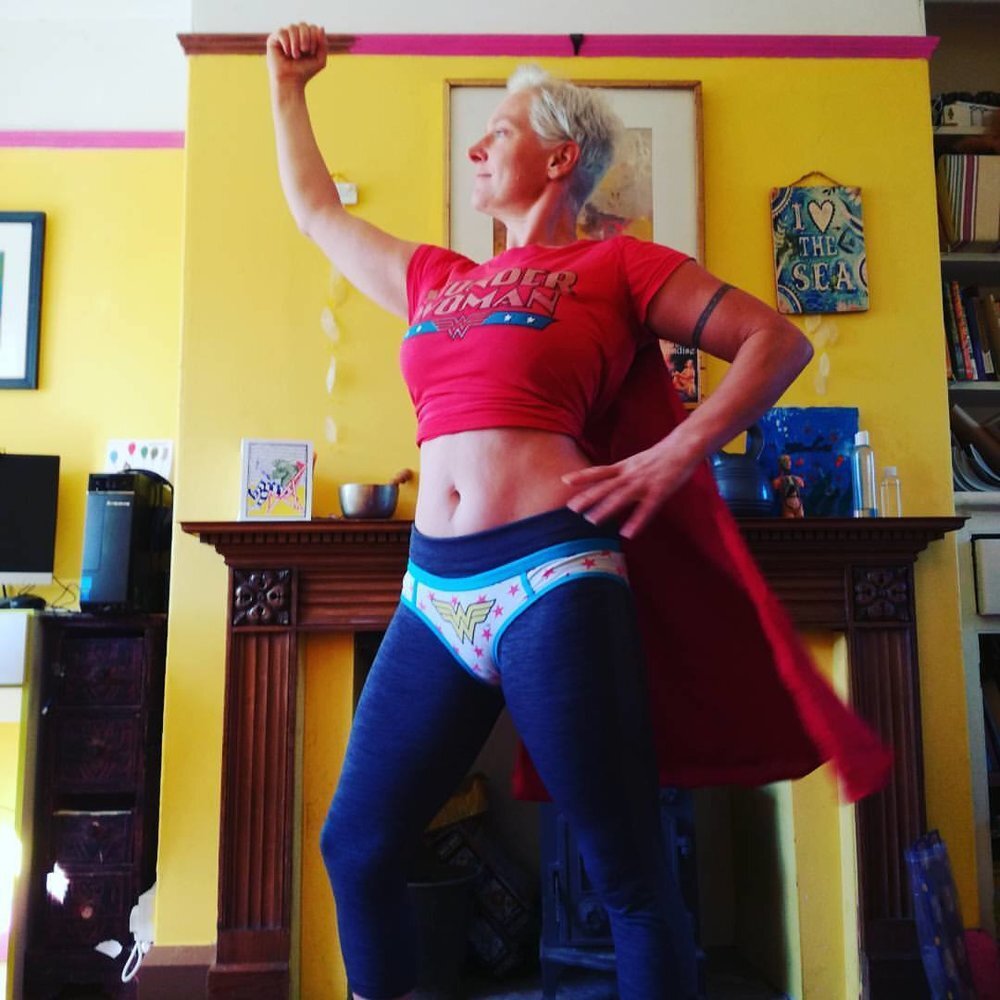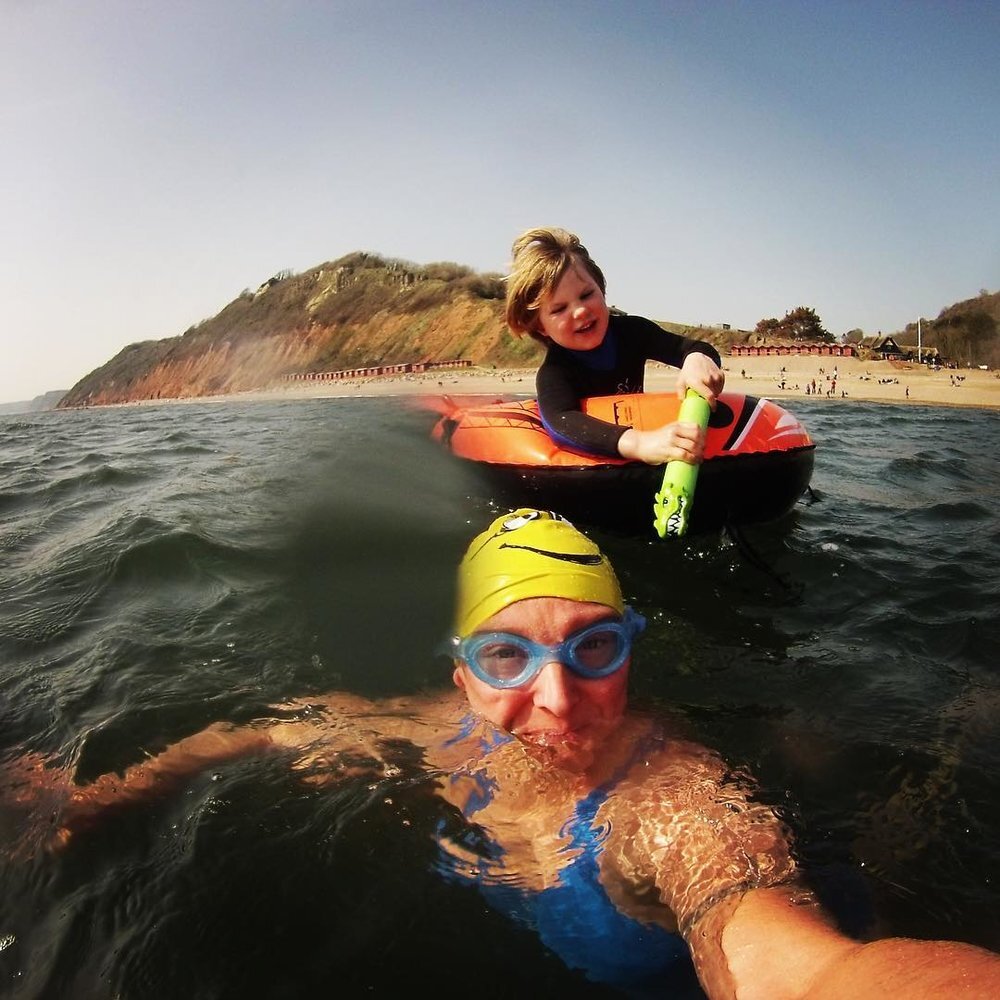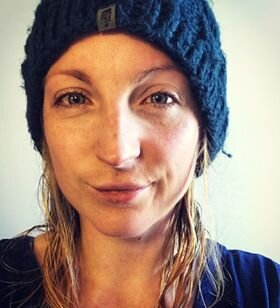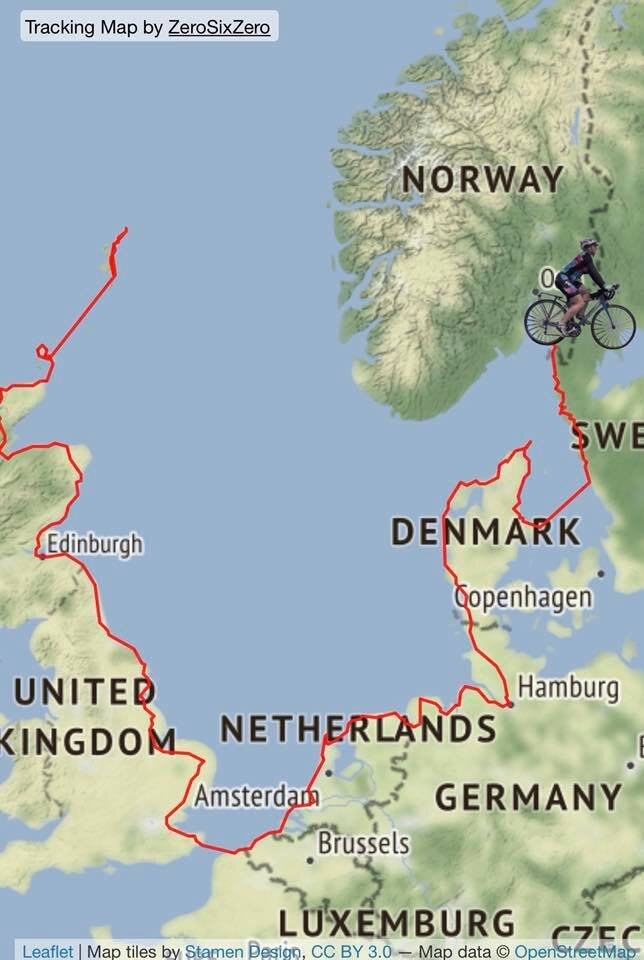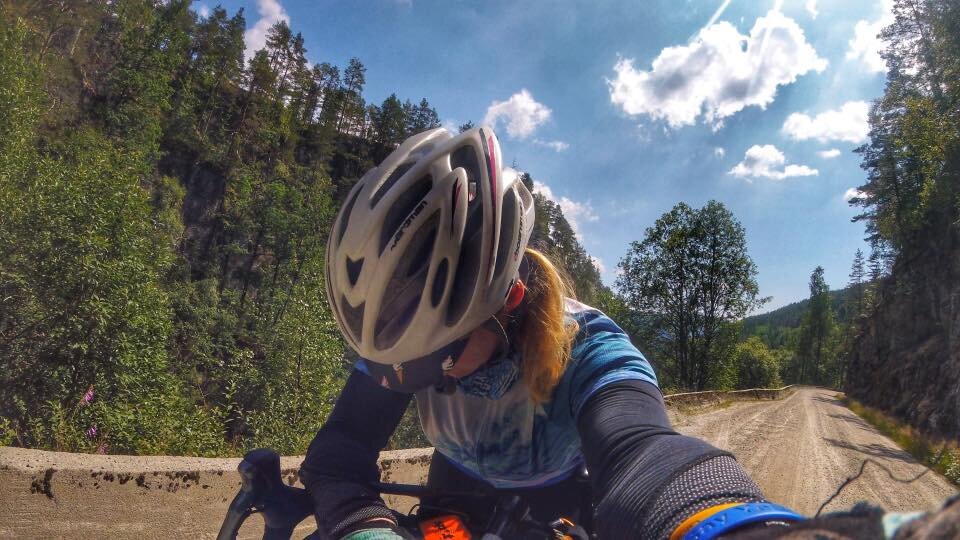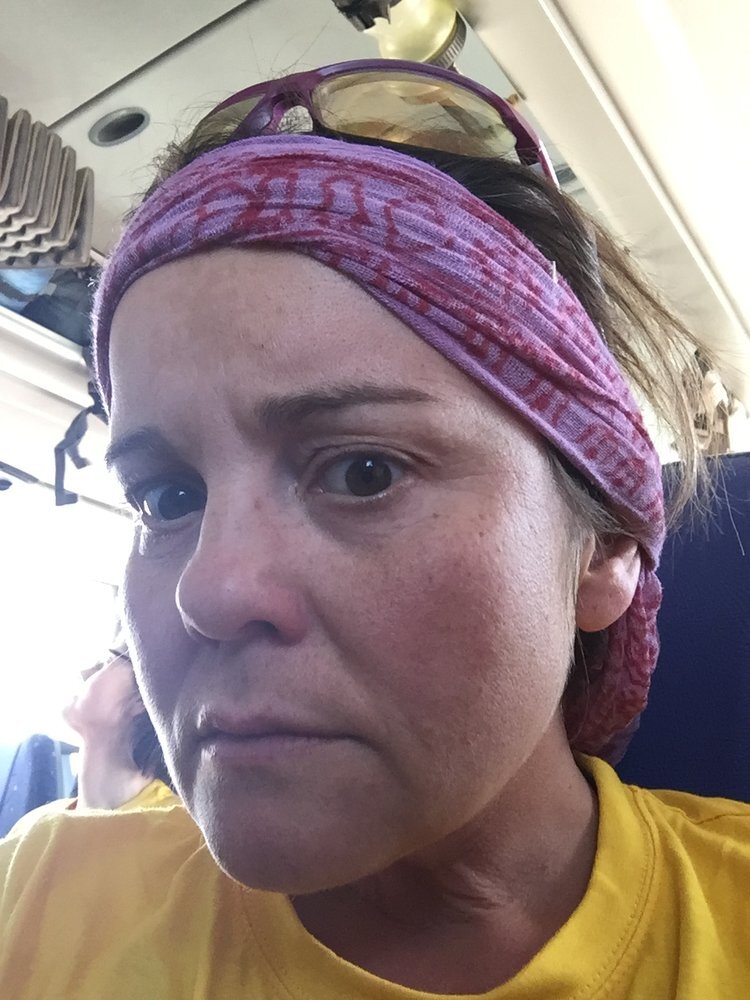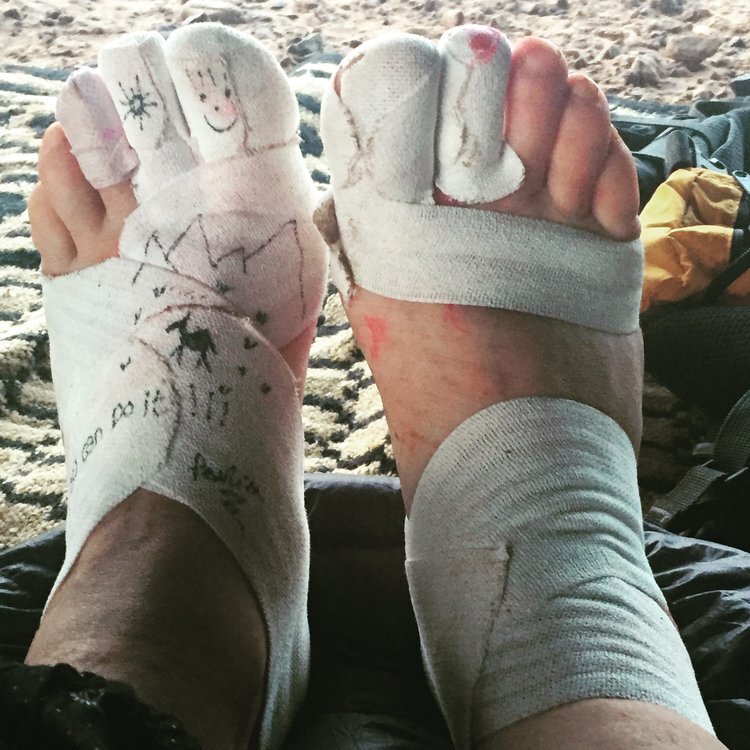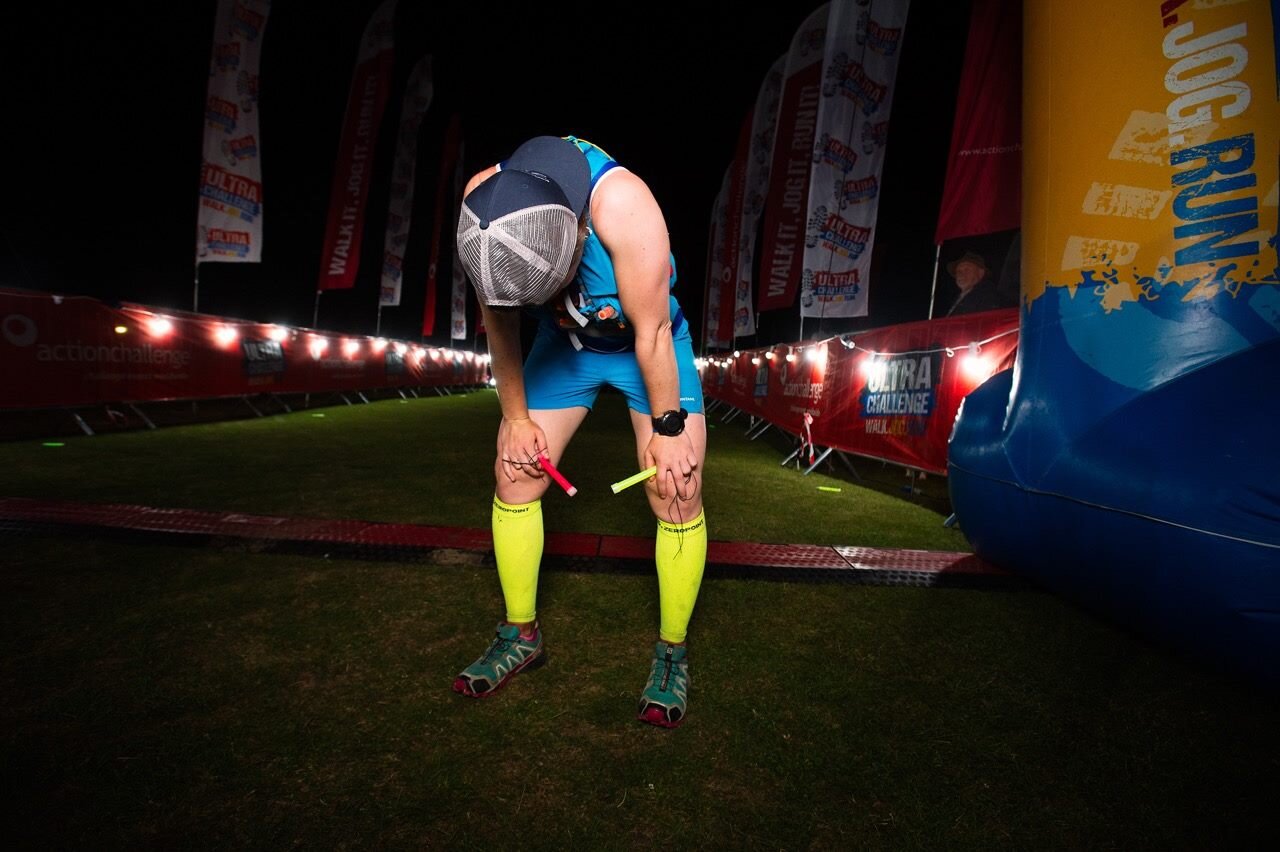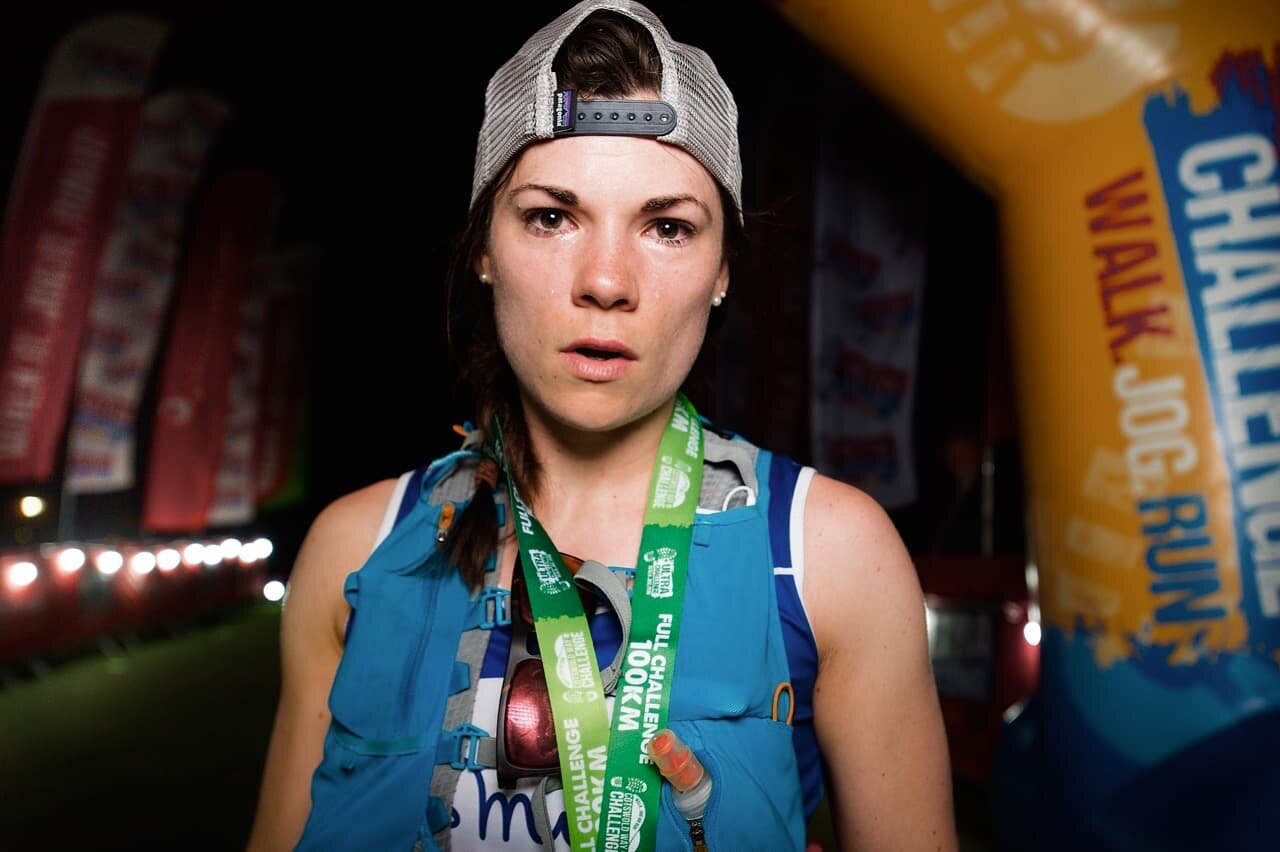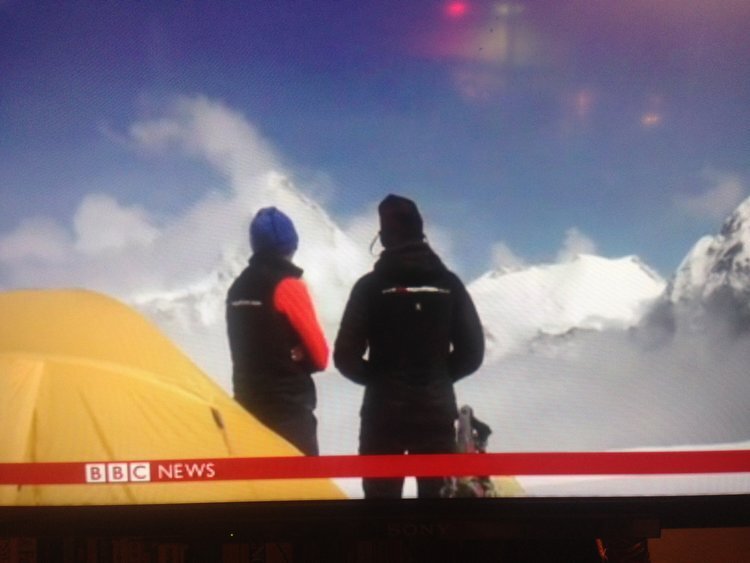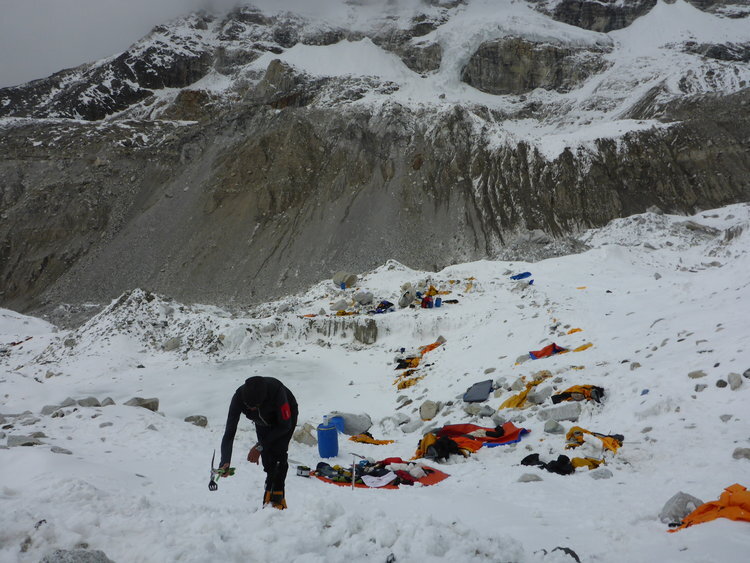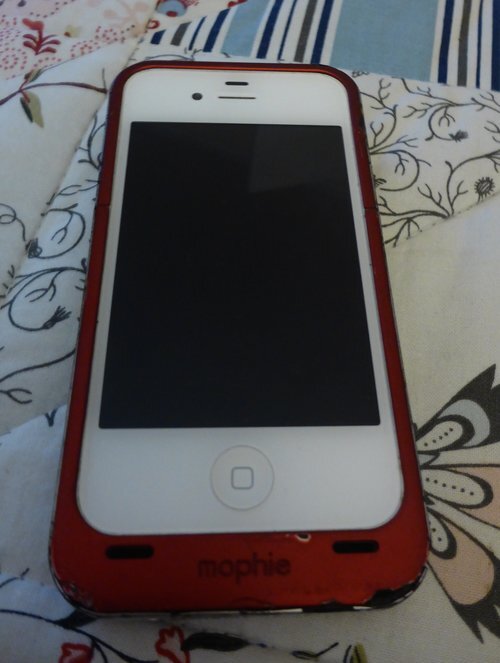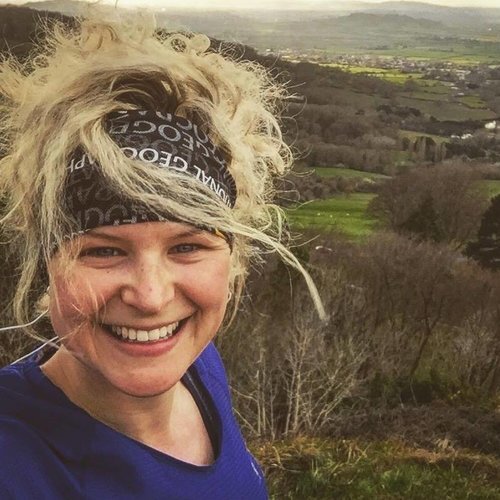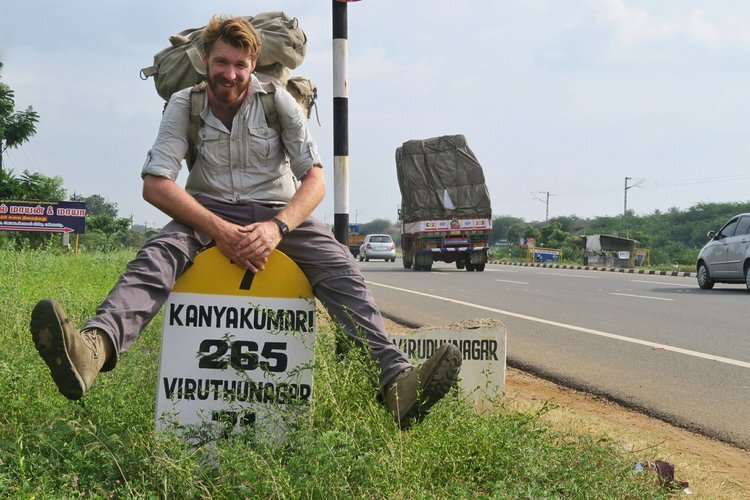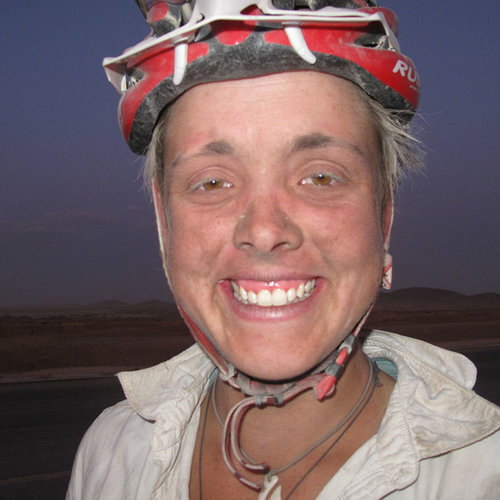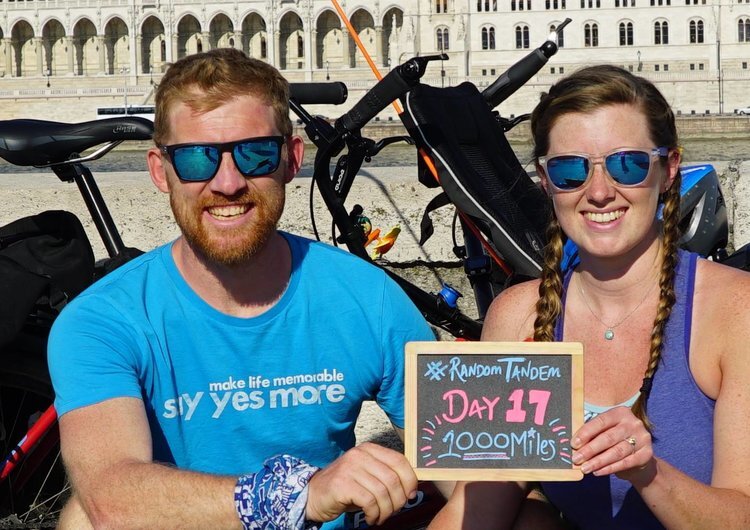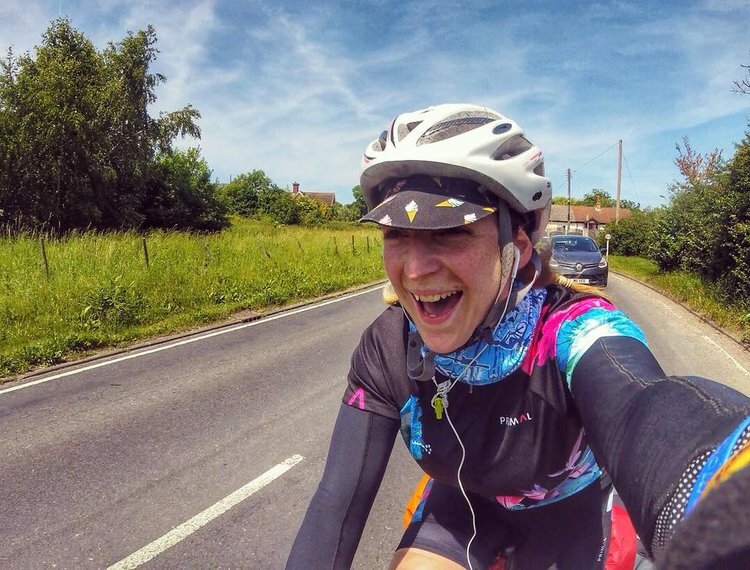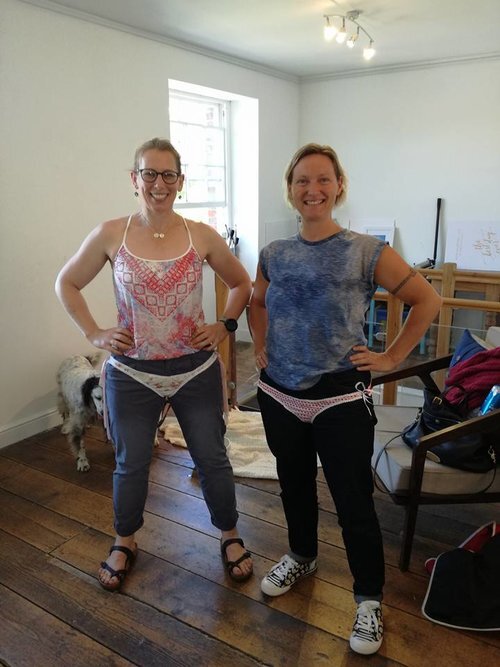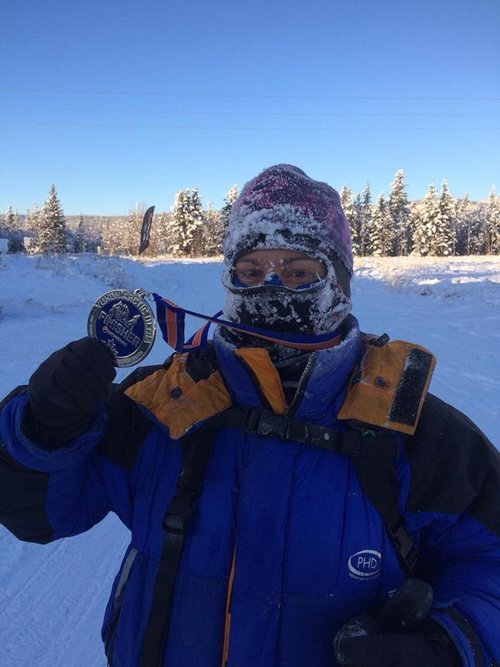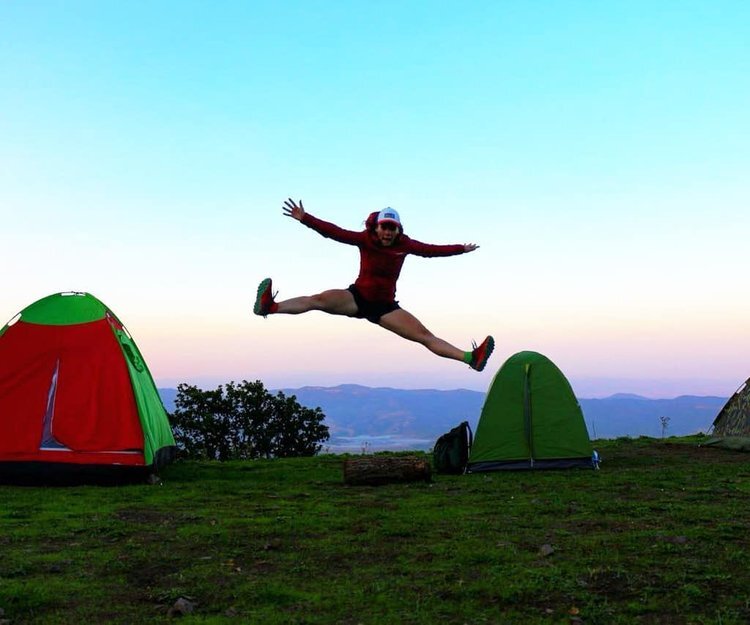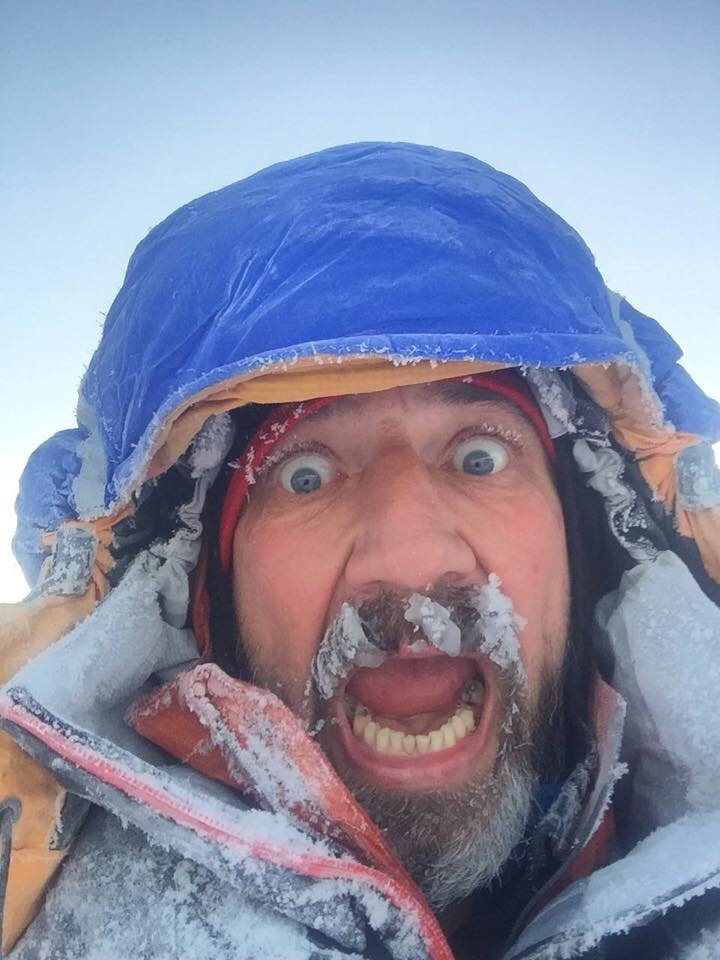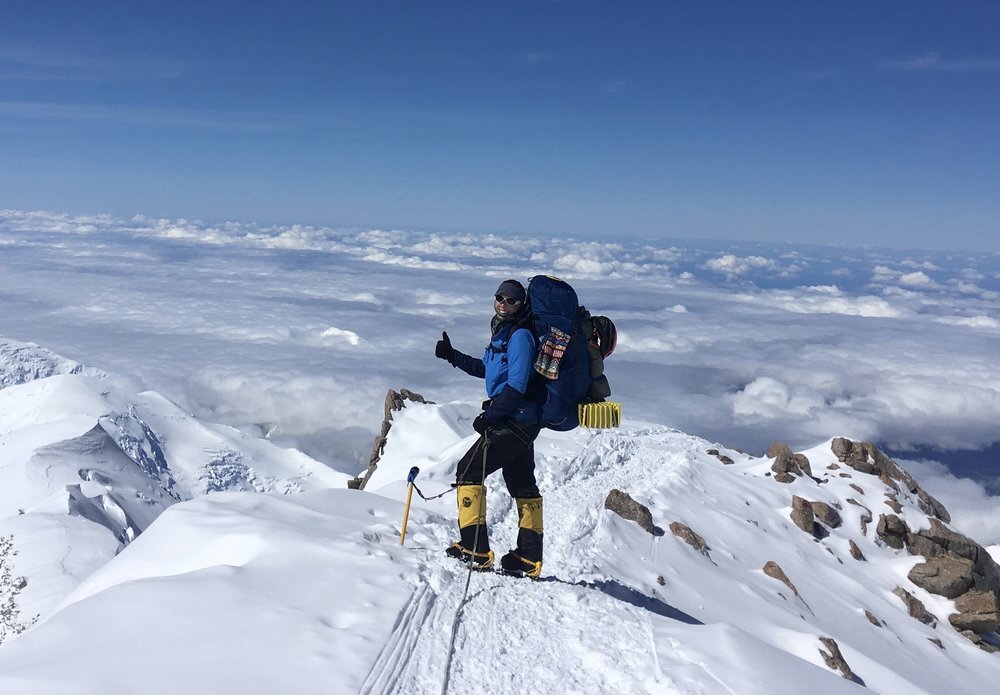Are you having a bad day? Don't worry, it's normal.
‘Right, that’s it, I’m off!’ were the words going around and around in my head. ‘I’ve had enough of this billy bull. I’ve come here to climb the mountain and not to be belittled, this is supposed to be fun.’
I was preparing a little speech to give to Rolfe about how I’d had enough and wanted to give up and go home. We were at Camp 2 on Everest in 2016 during our 2nd attempt at the summit that year with our first attempt being aborted the week before due to bad weather. My emotions were running high, I was on hyper alert and Negative Nelly was trying to have her way. Thankfully Positive Polly chipped in. ‘Why do you want to give up? You’ve come so far and been subjected to worse, don’t let this moment of pain eclipse a life time of achievement. The short-term pain of what you are going through now is insignificant compared to the long-term pain of disappointment that you will feel if you, quite literally, give up’ I knew physically and mentally I was capable of reaching the summit but….
Polly was right. Fortunately, I didn’t have that conversation with Rolfe and just put a lid on my feelings and carried on. A few days later we stood on the summit of Everest having survived the earthquake a year before, my own personal victory was bitter sweet.
I took this photo at Everest Base Camp, just a short 24 hours after we had reached the summit. I was totally spent. Physically, emotionally, mentally, everything had gone into that moment of standing on top of the world and there was nothing left. I was supposed to be elated but even elation was too tired to show her face, for now.
Going through life on a high is not a natural state or thinking that everything will go according to plan 100% of the time is a fast track to disappointment. We all have bad times in our day to day lives so why do we expect a week or more on expedition to be any different? A trip of a lifetime, something that we have worked and saved so hard for, we have chosen to be there and therefore we are meant to be enjoying all of it, right? Well, in my eyes, wrong. Life in general has its ups and downs, its ebbs and flows so why, when we are often in a state of anxiety for long periods of time, do we expect, that everything is going to be fine and dandy.
In this blog I explore not only my own experiences of having a bad day or few and how adventure is a good metaphor for life in business, but delve into the experiences of those who expedition in all sorts of ways. How they deal with ‘those days’ and how, in the end, we get through them and live to fight another wonderful and precious day.
Adventure needs to be adventurous – Fears and Tears, Angels and Demons
In this Amazon Prime life of instant gratification and social media happy faces we sometimes forget that it’s during the long slow plod and those not-so-fun times that we grow and become stronger more than during the WhooHoo high on life times. I’ve often been told by clients ‘this is harder than I thought it would be’ and yes, sometimes it is but that’s not a bad thing. It doesn’t have to be fun to be fun and quite often expeditions are Type 2 fun.
The Oxford English Dictionary definition of adventure is ‘an unusual and exciting or daring experience’ and I think ‘exciting’ is the part that a lot of people want and expect most of the time. They feel that having a bad day is a waste of time, but I have come to accept that it’s normal, all part of the way we deal with our perceived limits being expanded and our extraordinary becoming ordinary.
When Anna McNuff set off for her first 2 big adventures, cycling all 50 states of America and then running the Tearoa Trail in New Zealand she was, admittedly by her, a novice at adventure but she went into it with open eyes and keen to learn as she went, listening to the advice of those more experienced and then acting on what she thought was appropriate. She was certainly in for some epic adventures and I’d highly recommend you read her first book ‘Pants of Perspective’ that will take you on her rollercoaster 3000km run ‘Down Under’ a couple of years back. In the book she highlights her ‘Cheerleaders’ and ‘Soldiers of Self Doubt’. Similar to my Positive Polly and Negative Nelly, we both went through our own process of filtering out Nelly and the Soldiers in order to come through the tough times.
Sarah Outen, of ‘London2London: via the world’ fame shares similar coping mechanisms in her book. She went through some serious and life-threatening moments on her round the world expedition as well as the simpler ‘Am I really capable of pulling this off?’ thoughts. Her peloton of friends and family really struck a chord with me and it’s something that I borrowed and used on Everest when I was having a low physical or emotional energy moment whilst climbing. Knowing that so many people are behind you is a great strengthening factor to just keep on going and I physically felt that I was being pushed up that mountain to the top. Thank you all!
‘Failure is not an option’ – it’s all about your attitude not the altitude
I’ve heard these first 5 words so many times before and it makes my heart sink. Don’t get me wrong, I understand the sentiment but when people take it to the nth degree, when the red mist comes down, that’s when it can become dangerous. I lead many an expedition at altitude when this attitude can not only have an adverse effect on the person but also on the group. I’ve been on mountains when people ignore the advice of those in a position of better knowledge and authority. One incident nearly resulted in a life changing event for one chap who ignored his Expedition Doctor’s advice to turn around three times, said trekker snuck by to the summit and then developed cerebral oedema resulting in my local guide rushing him down to our Doctor to be treated and then rushed down to camp to find his group. We had no idea who he belonged to but fortunately someone at camp recognised him. He was a lucky chap. It transpires that he had placed a very large bet on himself to reach the summit, ‘no matter what’. His no matter what could have been life changing and having this type of bad day is totally avoidable. It’s all about your attitude.
Now, back to these wonderful adventurers and explorers. Even the best of the best have had bad days and as with all of us it’s how they learn and grow from said days that’s the most important part. Making a good outcome from a bad situation.
When bad things happen but greater things follow
Sometimes stuff happens on expeditions despite the best planning and preparation. It’s truly annoying to say the least and you do have the ‘Why me?’ feelings but then again, why would you wish it on anyone else. However, when sliding doors are in operation, bad can often turn into good and enhance your life in ways you never thought possible.
I hope you are aware of Dave Cornthwaite and Emma Taylor of the SayYesMore tribe. Dave set up SayYesMore in 2015 and this community has had a big impact on many a life. Dave was on one of his Expedition1000 journeys, walking through Jordan with fellow adventurer and great friend Lean McCarron and in his words ‘Broke leg walking Jordan. In the absence of 1000 miles I went home and met Em’. Seemingly, breaking legs runs in their connected vibes as Emms has also broken a leg whilst on expedition too and was transported around in a wheel barrow in Africa. They recently became Mr and Mrs Cornthwaite, hugest congratulations!
Knowing when to stop
Stopping when things simply don’t feel right is the best decision to make. It is sensible, it’s mature, it can save you physically and mentally and certainly is not failure. There is a big difference between giving up and checking out when times get tough and stopping for safety’s sake.
Scott Smith is an ex-Para and adventurer who runs his own company Adtrex with wife Michelle (more from her later). I’ve worked for and with Scott since 2011 delivering DofE expedition training and assessment and I have learnt a great deal about his strong work ethic and his never give up attitude. He has competed in and completed the Marathon des Sables and the Montane Yukon Arctic Ultra, amongst many other races and mountaineering expeditions, but it was this year’s Iditasport Impossible race that was his biggest event to date.
Having trained like a demon and had the best preparation he could all was well at the start of the race but despite his best efforts, the elements just are not with him. Mother Nature would have the final say and no matter whether you think you can beat Her (a fairly risky strategy in my eyes), the sensible option is to come home with all fingers and toes still connected to your body and try again. This what Scott wrote in March of this year after having to pull the plug on his race.
‘After 30 days and 783 miles I have decided to bring my Iditasport 1000-mile challenge to an end. I am absolutely gutted to have to make this decision but due to persistent snow, high winds, dense fog and whiteout conditions, the going has become incredibly difficult and sometimes impossible to make forward progress. With over 200 miles and only 5 days left before I would need to return to the U.K. I feel it would be foolhardy of me to think I could cover the 40+ miles per day that I would need to in such prevailing conditions. It has been an epic adventure with many highs and lows along the way, my metal has certainly been tested.’
For him it wasn’t about the return home date but also the impact on his safety with insufficient food to cover the last 200 miles due to more days on the trail than planned due to the adverse conditions. Sometimes it is just not meant to be. Having spent many an hour discussing his race in my van on DofE whilst the students slept soundly in their tents, I know just how hard it was to make the decision to pull the plug but he has learnt so much from his first attempt, from his training and preparation and will go back stronger in 2 years’ time. If you don’t learn from things that go well and things that don’t then you may as well stay at home.
Beth French in an incredible lady who has been through so much in her life. In her words ‘I was struck with glandular fever at 10 and didn’t fully recover. My adolescence being marred by periods of immune dysfunction and exhaustion. It was not until I was 17 and wheelchair bound that ME was given as a diagnosis’. Becoming an ocean swimmer confounded many a medical expert but as she says, swimming is her refuge. In her attempt to become the first person to complete the world’s 7 ocean swims within a year she decided to put a stop to her challenge during #5 of the 7. I simply can’t do her story justice in a few words, but I encourage you to read her blog about knowing when to stop even when you knew you were likely to succeed. It’s not always all about you, what you want or your success but also about those who are important to you. The impact of keeping going or stopping can have a far-reaching effect. http://bethfrench.co.uk/2017/09/15/not-the-end-but-a-departure/
“Failure can teach us sometimes that our goals weren’t what we want in the first place. You learn the lesson along the way, and the lesson is the goal. The pot of gold at the end of the rainbow moves with the light, so if I don’t complete all seven channels in a year, do you know what?; It’s not a failure because I’ve tried, and having opened up and been honest with myself and honest with people around me and said, do you know what? This is what I really what I want to try to do—that’s the scary bit, that’s the exposure, that’s the lesson; the journey to try to do it, that’s the goal, and we don’t ever call that the goal because that’s not an observable, achievable aim.” Writes Dr Linda Tucker – listen to her podcast with Beth here https://itunes.apple.com/us/podcast/top-100-inspirational-women-beth-french/id925468077?i=1000379128156
I am a great believer in a sixth sense, that gut feeling you get when you know something is right or wrong. You learn it the more you do your trade, the more experience you get. Expanding your normal is all part of game but listening to that gut and knowing the difference between sensibly stopping or giving up when things get tougher than we expect is a powerful part of your expedition knowledge, your expedition bank of experience.
Dealing with what others say about your premature finish is another matter but it’s the white noise that we need to filter out. It is your journey after all and if you are happy with your decision or understand that someone else has had to make the decision to stop for safety reasons then be comfortable with that. People often judge through eyes which lack the full picture. It’s not what happens in our lives, good or not, that make us the people we are but it’s the way we deal with it that is most important.
Taking a chill pill – it’s my decision to be here
Laura Kennington has completed some seriously amazing expeditions, but as with many of us, it hasn’t always been this way. She started with smaller adventures, building up resilience and a bank of bad days just by being out and about, and that bank is the back bone of why and how we can all keep on going.
On her recent Great North Ride, a 6000km 8 country coastal ride, you could feel her pain or elation through her social media posts. When things were getting really tough it was her attitude that shone out to me. When asked to send a photo and a description of a bad day for this blog this is what she wrote. I love the sarcastic positivity at the end, but you know that she has already looked back at that time and really laughed.
‘After a day of battling relentless headwinds, extreme heat, busy roads and mental drivers, hills and mild dehydration (partly from running out of water, partly from crying when it all got too much – I later realised I can’t afford to cry because I’m running low on water) and no food for the final 10 miles! Such good times…haha.’
You can learn so much from other people about resilience and about the way they deal with things when they are at the pointy end of life. I was recently asked what kept me going when I was having a really tough time, where did my determination come from and why on earth did I go back to Everest having experienced the trauma of the earthquake in 2015? A really simple answer was that it was my decision to be there and I could easily make the decision not to be (in most cases!). No-one had forced me to climb that mountain, it was my choice and I’d chosen to be there to push myself, expand my normal, to see what I really was capable of. It was also my choice how to deal with it and I now know when to give myself a good talking to when Nelly gets a little chatty. When we go through the tough times our armour gets a little stronger, our bank of stick-ability gets a little richer and when tough times come again we know how to deal with them.
Two further great examples of this are given by ultra-racers Michelle Lawrence-Smith and Katy Parrott. Michelle is a Deputy Head of a comprehensive school in Kent where the students have many challenges in their day to day life, an IML, co-owner of Adventure Training and Expeditions and Scott’s better half. She understands disappointment in many walks of life and is of the ‘keep calm and carry on side’ train of thought. When competing in the Marathon des Sables she suffered as much as many of the other runners with blisters, the searing heat, unrelenting conditions and a rather dodgy shoulder. That race then took her onto the colder climate of the Montane Yukon Arctic Ultra and having gone from +50C in the desert, she experienced -50C in the Yukon. Her calm nature, a life time’s worth of resilience in the bank and with most of the field dropping out (and bits of them dropping off) she kept her nerve and continued safely to take first female place in the race and 4th overall. There is certainly more to come from Michelle.
Katy Parrott is not new to adventure, but this year took on her first ultra-marathon, competing in a 100km race from Bath to Cheltenham, with many ‘undulations’ along the way. Katy was running not only for herself but also to raise funds for mental health charity Mind and in the memory of a great friend. As with Sarah Outen’s peloton, it’s amazing how taking on a challenge for a great cause can spur you on through the really dark and tough times. There is no such thing as a selfless act and, although I can’t speak for everyone or even anyone, I for one take on these adventures for myself as well as for others by pushing on through my own pain and dealing with my own demons along the way.
Katy says at the end of the race ‘There are no words to describe the overwhelming feeling of crossing that 100km ultramarathon finish line. Especially when it means so much. At 11:55pm last night I crossed the finish line of my first 100km ultramarathon. I set out purely to finish the challenge and raise a bit of money for Mind but exceeded all my expectations. After battling 2500m of climbing, highs of 30 degrees, 4 blood blistered toenails (goodbye nails) and utter agony in my hips and knees, I finished 3rd female overall with a total time of 16 hours 55 mins.’
Photos of Katy courtesy of Martin Hartley
Katy and I will be pairing up to take part in the Devizes to Westminster race next year and will be raising funds for Mind and Place2Be, both mental health charities close to our hearts. Watch this space!
When your mind says go, your body says no
Meet Olie Hunter Smart, he’s done a spot of long-distance trekking to say the least! Last year he walked the length of India, the first person to do so. A journey which took him from the high Himalayas in the north to the southerly most tip of this immense country and where he left just a little bit of himself along the route. I’ll let him tell the story:
‘Having come over the final snowy pass into the lower reaches of the Western Himalayas, I was immediately struck by the abundance of fresh food available - fruits, vegetables, street food. Having been limited in my consumption above the snow line, I gorged on anything I could lay my eyes on. I found myself enjoying chicken momos, a speciality in this part of India. Two days later I was unable to stay awake throughout the day, and another 24 hours later I had been struck down by my first bout of Delhi Belly! I was driven down the hill to the doctor on the back of a motorbike barely able to hold on, who confirmed some kind of stomach infection and for the princely sum of £2, I was prescribed a batch of antibiotics. A few days later I was strong enough to make a move. Except, it wasn't the physical nature of this illness that affected me, as I knew that was inevitable at some point. It was the delayed reaction of how it affected me mentally which lasted well beyond any physical signs. For two weeks I questioned whether I could complete this journey as planned, and why did I think I could be the first person to walk from the very north to the very south of India when no one else had. Those doubts challenged me in so many ways, especially when I was offered lifts, but I played ticks with myself to get to the end of the day, week, or a destination before I would consider re-thinking my expedition. Ultimately, that kept me going long enough until I had mentally recovered from the set back.’
Dealing with a medical set back can, as Oliver says, play tricks on your mind. Our minds are so much stronger than we give them credit for and once again the power of our thoughts to sabotage a goal can be overwhelming. Knowing when to stop and ask for help can make the difference between success and having to pull the plug for good. Working on what happens in your mind is the next step.
Remembering what others go through at home – they have their bad days too
When the earthquake struck at 11.56am on Saturday 25th April Rolfe and I were sorting our tent out at Camp 1 on Everest. There were many things which could have stopped our climb but, even though we were in the Himalayas, an earthquake wasn’t even on our radar. Once the ground had stopped moving and the avalanche debris had settled down I grabbed our sat phone, shoved it in Rolfe’s hand and said ‘please phone Marni (his wife and co-owner of 360 Expeditions) and tell her we are ok. Please ask her to phone my Parents on their mobile, not the land line’ His response was ‘yeh, yeh, yeh’ but I was insistent. My Parents of more mature years were on holiday in Belgium at the time and I didn’t want them finding out about the earthquake courtesy of the BBC. BBC journalist and cameraman Tom Martienssen was climbing with us and had already filed a report with the BBC so time was of the essence.
Fortunately, when Mum received the call from Marni she had only seen the ticker line at the bottom of the page ‘Earthquake in Pokhara’ and knew that we were no-where near that side of the country but didn’t know how bad our situation was. I’m sure Marni’s words of ‘they are ok’ helped but Mum and Dad shot home as fast as they could.
For us it was easy (it’s all relative) as we were living what was going on second by second and could react accordingly. Those at home were getting 2nd hand news, often dramatised (not Tom’s work thankfully) and a few hours late. The earthquake was a drama in itself so why make an already dramatic event worse. This event certainly expanded my normal and gave me a slightly different benchmark on life. The after effect on both me and those close to me was quite marked.
During her own Everest expedition, Holly Budge took this video. If this isn’t part of someone’s normal who is watching this then I guess it can look pretty scary.
‘This video was taken in Camp 2 on my ascent of Everest on the north side, just below 8000m and it was at the end of a gruelling day of high winds, fog and temporarily losing my climbing partner for four hours which saw me climbing 500m higher alone and in the dark, thankfully to be reunited right at the top of camp 2. Was pretty intense especially as we were a two-man team! Summited 1.5 days later and was rewarded with blue skies and amazing views on the summit. Unfortunately got caught in a storm on the way back down and we had to spend a night in Camp 3 at 8300m. I’ve never experienced winds like it and in the morning, we were one of only three tents left standing. The others were blown clean off the mountain. A further 9 hours, battling with the winds and we were back in ABC (Advanced Base Camp). I didn’t realise the profound effect, at the time, this video would have on my friends and family following the expedition as I look like I’m half dead! My mum cried when she saw it!!’
So why do we put ourselves and our families through it? I’m sure my Mum has asked herself this very same question many a time. When Rolfe and I were evacuated back to Everest Base Camp 2 days after the devastation of the earthquake in 2015 we arrived at a camp destroyed by the mother of all avalanches. Everest Base Camp is usually a thriving community during the Spring climbing season, full of around 1000 people either climbing or supporting said climbers. What we walked up through was like being on a film set. It was as though someone was going to come out and say ‘Cut! Brilliant but if you could just walk a bit slower that would be great’ But this wasn’t a film set, this was real life.
We dug for our kit for 2 days and I was convinced that I was going to find my mobile, I wanted and needed to find that iPhone. It was not the phone itself that I wanted but the connection to home, to my Parents, family and friends. Towards the end of day 2 with 8 hours of digging a day I was told by Rolfe to just stop, you are never going to find it. Just a little more I said to myself and there is was, under a meter of snow and ice, just sat there. I sat it in the sun for a bit, turned it on and a host of messages came pinging through. I simply couldn’t believe it! After texting Mum to tell her I was back in contact I replied to a text from my sponsor. We had a brief chat and he asked if I would go back. I replied Yes. It wasn’t bad preparation that had stopped our climb but Mother Nature having a tantrum. Brilliant he said, go back next year. I screamed and then quickly told Mum that we were coming back the following year. The response I received? ‘Great’ and I can imagine it was not said with glee.
I do it because life is out there to be grasped and grabbed with both hands. I used to be hugely risk averse and said no to too many opportunities, always thinking of what could go wrong. I now have a very healthy respect for risk but know when to push things and when to back off. Saying yes more has enhanced my life and has afforded me the opportunities I never thought possible. My Parents respect that as much as I respect their concerns.
I am also very aware of the damage that social media can have on someone’s nerves back at home. When we post a dramatic story of what’s happened we are usually tucked up in a tea house, sipping hot chocolate and ready for bed. Those at home read this and head off to the land of nod in worry mode as they have no idea that all is safe now. Once again Anna McNuff alludes to this in her book, Pants of Perspective, reminding herself of the impact of such emotions on her loved ones when her bad days were over.
Life is like an echo – what you send out comes back.
I spent way too long brooding over my Everest expedition however, looking back on it, I needed that time to filter out what had happened not only in 2016 but also the aftermath of 2015. I am also very aware that the words that I choose to use when regaling a story and impact I wish those words to have can have far reaching effects. It’s the same with how we act and react on our tougher days. I’m now much more open to asking for help, knowing that this is a strength and not a weakness. Everyone goes through tough times, we are all humans, and showing a bit of humility and vulnerability has made me a stronger and more empathetic person.
What ever the size of your expedition, from micro to massive, having the tougher moments is all part of the journey and not the destination. So if you are having a bad day, don’t worry it’s normal. One life - live it!
A huge thanks to all of the fabulous adventurers who offered up photos and quotes for this blog and to Sarah and Anna for giving me inspiration in their books.



